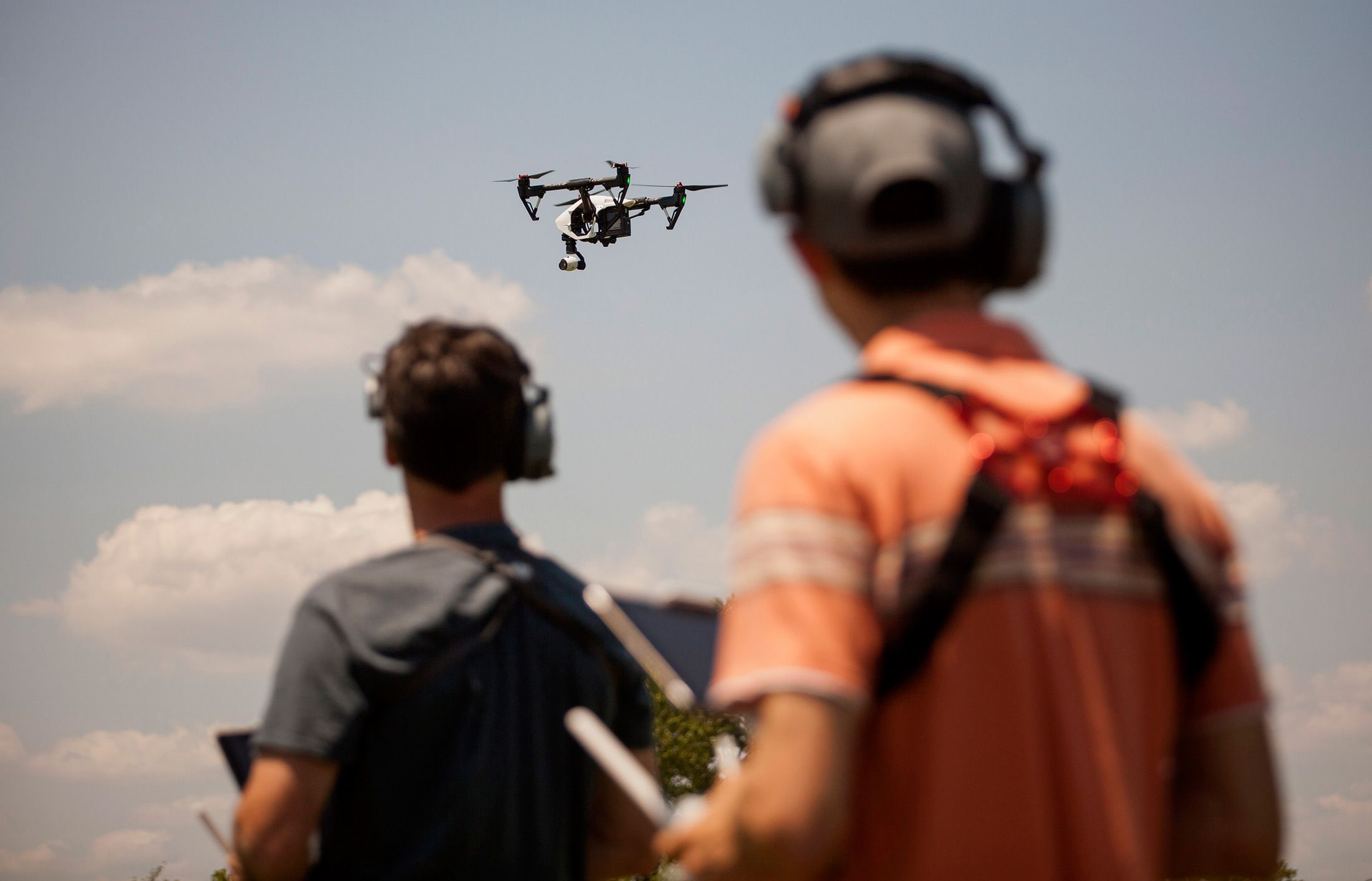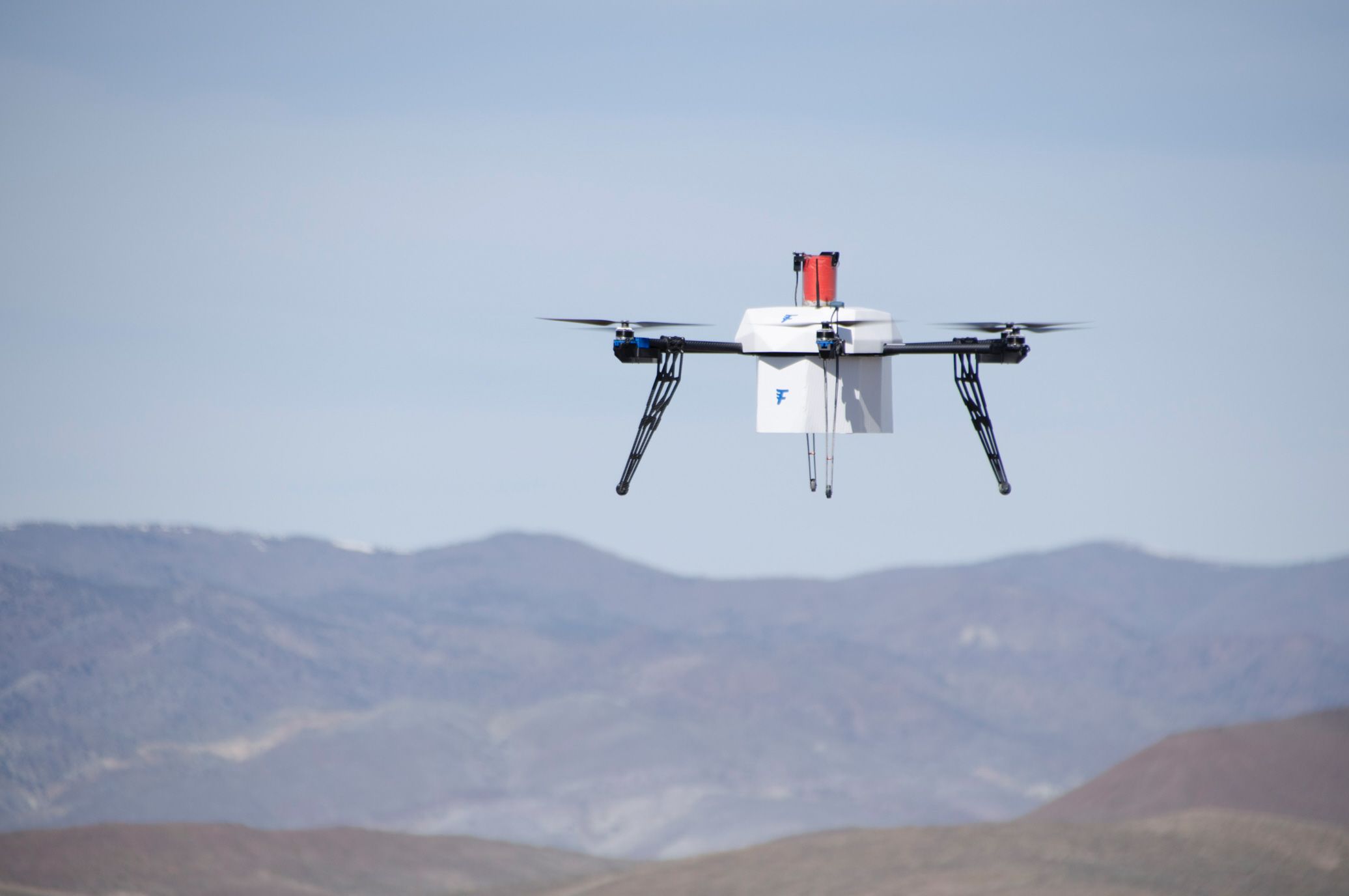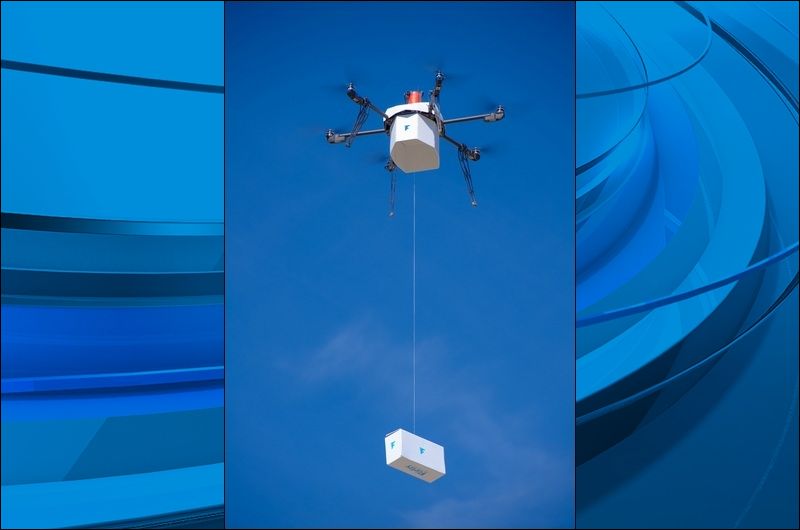During suicide bombings.



Annual sales of drones in the U.S. will hit 2.5 million this year and swell to 7 million by 2020, according to a projection from the Federal Aviation Administration.
Unmanned aircraft purchases are growing both for hobbyists and for commercial ventures that perform inspections, assist farmers, and survey construction sites, according to the agency’s annual forecast of aviation activity, released on Thursday.


RENO, Nev. (AP) — A Nevada firm says one of its drones has successfully completed the first fully autonomous package delivery in a residential area in the U.S.
Flirtey CEO Matt Sweeney says the six-rotor drone flew about a half-mile along a pre-programmed delivery route on March 10. It lowered the package outside a vacant residence in an uninhabited area of Hawthorne, southeast of Reno. The route was established using GPS. A pilot and visual observers were on standby during the flight but weren’t needed.
The package included bottled water, food and a first-aid kit.

When the apocalypse comes, it won’t do so on four rotors. Drones, especially drones-as-we-know-them—the affordable, commercially available quadcopters—are only really engines of their own destruction. Zoltan Istvan, transhumanist candidate for President, wrote today that the American constitution is unprepared for the challenges of swarming robots. With all due I respect, I couldn’t possibly disagree more.
“The Second Amendment Isn’t Prepared for a 3D-Printed Drone Army”, Istvan argues, and vividly sets a scene of total despair:
CRACUNS, an innovative drone being developed by Johns Hopkins University, can be launched from under water and live completely submerged for as long as two months. http://voc.tv/14JQHoo
Rolls-Royce has released their vision of the future of shipping, which will see the continued evolution of that ongoing trend toward automation and “unmanned autonomy.”
On Tuesday, Rolls-Royce —more famous for its luxury cars than its maritime contributions—rolled out a slick new video detailing a number of projected innovations in containerized shipping. The company hopes to someday make these innovations a reality, and if they do, it will mean a revolution in the way we ship goods across the seas.
In the film and pictures released by the company, we see a team of impossibly good-looking young coffee-drinking model types going about the business of controlling and monitoring seagoing vessels from the comfort of a shore-based, remote operations center—what Rolls-Royce calls the “oX operator experience concept.”
Neurons still remain the most powerful piece of computation machinery on the face of the planet. More to the point, nobody throws up their hands in despair when a screwdriver removes a flathead screw better than their fingernail can, and yet the parallel is an apt one. The circuitry of the human brain has not been honed by evolution to be especially good at playing the game of Go, any more than evolution has fine-tuned our fingernails for removing screws.
Which is not to say there is no room for surprise in today’s world of rapidly advancing technological achievement. What is more impressive, however, is when computers exhibit greater skill than humans at tasks evolution has been perfecting for millions of years like exercising a sense of smell. And yet such advancements are taking place right beneath our noses, metaphorically speaking.
Recently a UK startup called Koniku released details on a drone that uses neurons embedded in a computer architecture to achieve the sense of smell exhibited by a bee. With only 64 neurons, the chip achieves a sense of smell capable of detecting explosives over one kilometer away. The accompanying video bears testimony to this amazing achievement, as the drone in question hones in on its target with almost bee like movement. In fact, the only thing missing is an incessant buzzing noise.
They’re taking over everything.